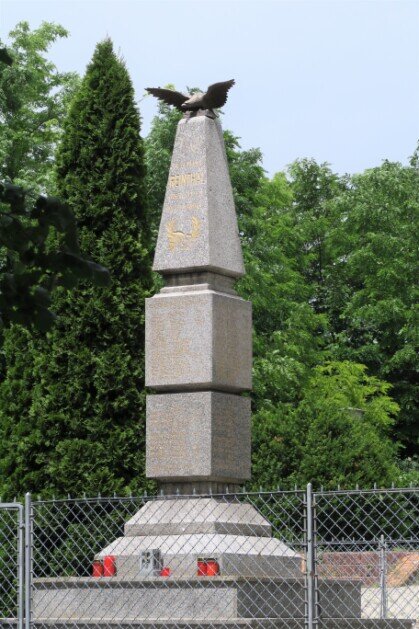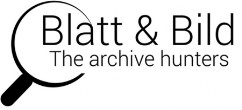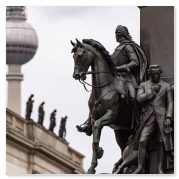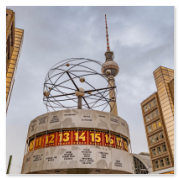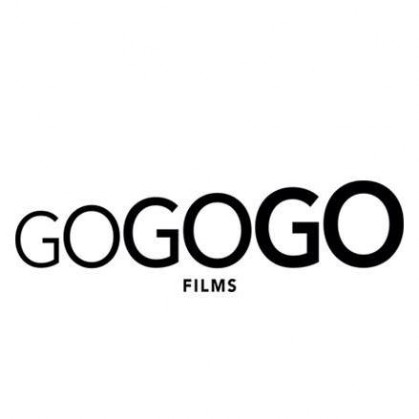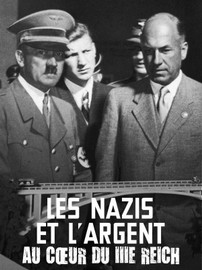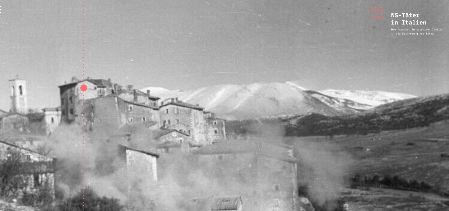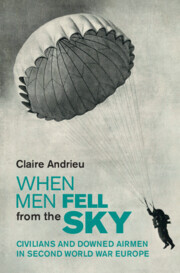Some of our previous projects

Our work for filmmakers
Berlin's Odyssey
A virtual reality tour of the city at the iconic TV Tower
The TV tower is one of the most popular tourist attractions in Berlin. Located in what was East Berlin, it now represents the unified city and houses a state of the art exhibition that takes visitors on a 15 minute, virtual reality, journey through 900 years of Berlin’s history.
The VR tour starts in the Middle Ages, when the city was little more than a village and takes the viewer through the Renaissance, the German Empire, the decades of division and into the modern era of unification. It offers an insight into the construction of the Tower, takes viewers into the homes of normal people on both sides of the wall and compares the television programs that were broadcast during the era of partition.
In collaboration with the production company Timescope, Blatt & Bild helped develop the concept for the VR tour. We unearthed the archived film footage and old images that were used in the exhibition and oversaw the project to ensure historical accuracy.

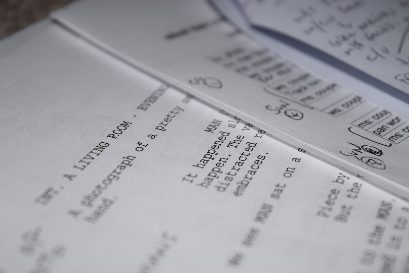
Fritz Bauer's Legacy – a reflection on the Nazi trials
A film by Sabine Lamby, Cornelia Partmann and Isabel Gathof
This film focuses on the yet unanswered question of why it took several decades for Fritz Bauer's opinion of the law to find its way into the German courts. He was of the opinion that a criminal regime was only able to operate because there were people who were prepared to commit heinous crimes and/or others who were willing to ignore mass murder. This applied to everyone who worked in the extermination camps, regardless of their position in the military hierarchy, or whether or not they had themselves committed acts of brutality or murder. To witness it was to be a part of it.
More than 40 years after the first German Auschwitz trials, in which Fritz Bauer was the General Attorney, the German legal system is only now following his approach. In the trial against John Demjanjuk in 2011, he was found guilty and sentenced to five years in prison, for having been an accessory to murder during the war. This was the first time someone was successfully prosecuted on the basis of having been an accessory to the murderous Nazi regime.
The film covers all the trials held since 2011 and goes into much detail about the last of its kind in 2015. That of Oskar Gröning – the accountant of Auschwitz.
Blatt & Bild contributed to the research for this film. We unearthed historic newspaper articles which reflected public reactions to the Auschwitz trials in the 1960s and scoured files from the picture agencies at Ullstein Bild, SZ-Photo and Picture Alliance. We also combed the collections of memorial sites at KZ Neuengamme and scoured through the vast collection of microfilms of national and regional German newspapers, at the State Library in Berlin.
The documentary was released in cinemas on 2 February 2023.
Hitler and Stalin - The clash of tyrants
A film by Michël Prazan
Siècle Productions made a 90 minute documentary about the close political relationship between Hitler and Stalin. They covered the relationship from the early 1930s, through the second world war and up to the demise of Stalin in 1953 and pays particular attention to the pact of non-aggression made between the two leaders in 1939.The film is made up entirely of archive footage and Blatt and Bild found many of the documents, old images and film footage from the pre-war era. We scoured the German Federal Archives, the Political Archives of the German Foreign Office and searched through the records held at numerous image agencies, including Ullstein, Getty, SZ-Photo, Archiv für Kunst und Geschichte (AKG) and Bildagentur bpk.
Most of the photographs, film footage and documents we found were colourised and brought to life with contemporary technologies.
The documentary was broadcast across France in May 2022
The Nazis and the money
A film by Gil Rabier
In June 1940 Hitler's tank troops launched surprise attacks on Holland, Belgium and France, with the sole purpose of taking control of Europe.
Germany had no financial resources, few raw materials, no oil and no foreign currency, so how did the Nazis succeed in their mission, without money and supported by a weak economy, to sustain the catastrophic effects of the Second World War?
The film uses contemporary 3D animation and a combination of rarely seen archival material. It illustrates how the Nazis succeeded in anchoring their racist and violent beliefs, into all areas of the German economy, from national industries and agriculture, to small business owners and sole traders. The film shows how the Nazis created an economic model based on robbery and mass murder and convinced the German nation that they were morally justified to rule Europe.
For the animations, Blatt & Bild went to the Federal Archives. There we uncovered the original technical drawings of the German ‘Tiger’ tanks, as well as documents from various Ministries of the Reich, including the aviation, agriculture and finance departments.
We also found several original German newspapers, in which the headlines screamed of ‘’huge economic successes in Europe’’ to the German nation. The successes they spoke about involved the mass exploitation of Soviet prisoners of war and the forced labourer of thousands of people across Europe. All are described with a shockingly cold administrative language.
Our work for academics
Richard Travers, Macquarie University, Sydney
German and Australian combat units in the Battle of Crete - Adversaries or brothers in arms?
The purpose of this PhD thesis is to examine the social structure of the Luftwaffe's Paratrooper Regiment 2, and other military units, involved in the fighting at Rethymnon, on Crete in May 1941.
It is a study of the German and Australian soldiers who were engaged in the battle. It is a study of the men who fought, not a study of the battle itself and the subjects are ordinary, unrecognised soldiers, not the generals.
The ultimate question is: were the men who fought at Rethymnon so different from one another, or were they quite similar?
Blatt & Bild conducted extensive research on reams of military service record books and dog-tag registers in the German Federal Archives, in Berlin. We were able to locate the required Wehrstammbücher by analysing the many different databases held at the Federal Archives.
“Thanks, Corinna. I greatly appreciate the work you are doing”.
Richard Travers
British Library, Public Domain
Bundesarchiv, Bild 183-M1129-300 / Donath, Otto / CC-BY-SA 3.0
Dr. Carlo Gentile, University of Cologne
The massacres in occupied Italy (1943-1945) - How the perpetrators defended and rationalised their crimes.
For this project Blatt & Bild evaluated personnel documents and official files from the German police forces, the Waffen SS and the NSDAP membership files, at the former US - Berlin Document Centre (BDC).
Many of the files have since been digitalised and can be viewed in digital format or on microfilm in the Bundesarchiv, Berlin.


Institut d’études politiques de Paris (Sciences Po)
Prof. Dr. Claire Andrieu
Research for Prof. Claire Andrieu as part of her project Helpers et lyncheurs dans l’Europe allemande, 1940-1945. The aim was to find people who had witnessed German airmen bailing out of their planes and to establish how the population in various European countries reacted to members of the German air force, who had been forced to make emergency landings in enemy territory.
Blatt & Bild carried out research for this project at the former Deutsche Dienststelle (WASt). We also conducted an interview with the former German pilot, Joachim, who was shot down over London in 1944, had to exit his plane by parachute and was subsequently held by the British as prisoner of war.
Claire Andrieu: When Men Fell from the Sky. Civilians and Downed Airmen in Second World War Europe, Cambridge Universitiy Press, 2023.
German Historical Institute Paris
This project by the German Historical Institute in Paris produced an interactive online map which provided information about the location of the various German and French government offices in France during the German occupation.
Blatt & Bild established the database of information and historical photos and developed the online search tool which was based on the official German telephone directories and French administrative records.
Our work for individuals
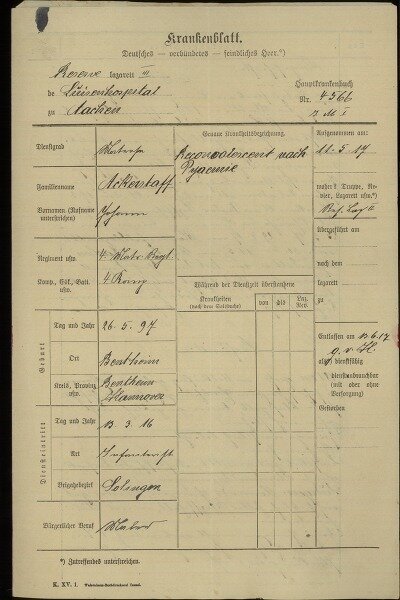
German military hospitals in Belgium during the First World War
Yannick Van Lierde
Belgium
Belgium
The primary aim of this study was to identify individual soldiers, list their injuries and make a record of what eventually happened to them. The secondary purpose was to establish a record of everyday life in German military hospitals during The First World War.
For this project Blatt & Bild accessed and analysed the extensive hospital registers from the German military hospital in Geraardsbergen. These records formed the basis for Mr Van Lierde’s research.
‘’Thanks again for your valuable help in this case‘‘.
Yannick Van Lierde
The soldiers from Reintal, Austria who fell during the Second World War
Gerhard Wimmer
For this project Blatt & Bild analysed the index cards of the Central Personal Index in the Bundesarchiv and were able to identify the ranks and units of individual soldiers. From there we were able to determine the locations and cause of death.
"Thank you very much for your research, that is more than I hoped to find."
Gerhard Wimmer
